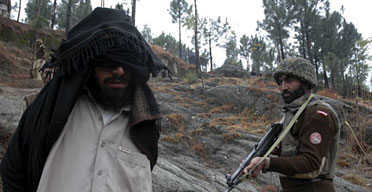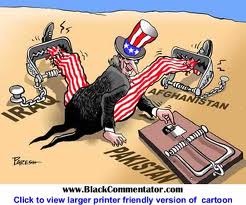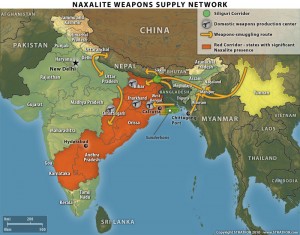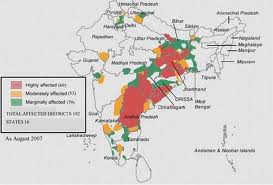
India’s government, under intense pressure to respond to December’s deadly gang rape of a 23-year-old woman on a Delhi bus, has brought forward a new law with tougher sentences for sexual crimes and a broader range of offences, including stalking and sex trafficking.
But the law doesn’t go nearly far enough; it doesn’t even begin to address the shocking sexism of India’s male-dominated institutions. Meanwhile, a new report details the widespread and horrific sexual abuse of children of both sexes in India, and the government’s failure to prevent and punish it.
This momentum must lead to better laws and tougher enforcement, but those alone won’t be enough. What hope is there of progressive laws when there are so many politicians with criminal, rape and sexual assault charges? Only a comprehensive, long-term public education campaign can force the full “mind-set revolution” needed to end the horrific and ongoing victimisation of women and children.
Children: ‘shielded by silence and neglect’
The facts are grim: rape is the fastest-growing crime in India – up by 875% since records began 40 years ago – and one in every three rape victims in India is a child. An Indian government survey found more than half of the children interviewed reported being sexually abused.
Last year, India passed a law that for the first time makes all forms of child sexual abuse specific criminal offences. It also calls for police and courts to be more sensitive and responsive to the needs of child sex abuse victims.
But a new report, released by Human Rights Watch last week, details the many ways the government isfalling short in its obligations to protect children. Some examples:
– Police often humiliate the victims of child sex abuse and their families, insulting them, refusing to file a complaint and even detaining and threatening victims until they drop the complaint.
– Doctors and other medical personnel re-traumatise victims by subjecting them to humiliating, painful and medically useless exams.
– Because rape victims are often considered to have brought shame on their families, relatives and neighbours will deny the abuse took place, or pressure victims to remain quiet. Some families say they’ve been ostracised for reporting abuse.
– Orphanages and other bodies entrusted to care for children are frequent sites of horrific abuse, with many unregistered institutions and lax government oversight. One government-supervised residential facility was found to have forced young girls to have sex with strangers for money. Vinod Tikoo of the National Commission for the Protection of Child Rights told Human Rights Watch: “It is not neglect. It is systemic failure.”
All this and more leads to such heartbreak …
Leaving gaps
The picture is similarly shocking for women across India. In 2011, 65% of men surveyed said they thought it was OK to beat a woman; last month, after the brutal Delhi gang rape, a survey showed that 92% of men in Delhi knew someone who had harassed or sexually assaulted a woman.
The temporary ordinance just signed by India’s President Pranab Mukherjee toughens penalties for rape (in fact, it allows for the death penalty, against the recommendation of the panel headed by Jagdish Sharan Verma, former chief justice of India, who was tasked with suggesting revisions to the rape laws). It also adds penalties for stalking, acid attacks and trafficking of women and children.
But the ordinance ignores recommendations from the Verma committee to criminalise marital rape and remove barriers to prosecuting soldiers for rape.
It also changes the legal term rape to sexual assault, making it gender neutral. That might seem a progressive move; many countries, including the UK and the US, already have legal language that makes sexual violence a crime, whether perpetrated by males or females. But many activists fear that India’s notoriously slow and ineffective legal system will become bogged down as men accused of rape file counter charges against their victims, saying the women sexually assaulted them.
These omissions in the new law leave big gaps in protection for women and leave many wondering whether the government is at all serious about ending the epidemic of violence against women and girls.
Laws are not enough
At root, all these horrors grow from cultural attitudes that see women and children as worth less than men. And it’ll take more than changes in the law to make the key shift here.
The child sex abuse epidemic demands that there be training for police, courts, social workers and medical personnel so they know how to properly respond to child sex abuse. There must be reliable monitoring, oversight and enforcement of the law and related policies – and above all, perpetrators must know that sexual abuse of children will be punished.
Meanwhile, Avaaz has proposed a massive, sustained public education campaign across India to cure the epidemic of violence against women by driving home the message that it’s always wrong. The effort would enlist top celebrities from the worlds of sport and entertainment, as well as social leaders across the board, in a high-profile programme of media outreach and engagement focused on transforming people’s attitudes.
It won’t be cheap; to be effective, this campaign will likely cost about 50 rupees (about $1) per person per year. That works out to $1.2bn annually for at least four years running – and core education programmes should carry on for decades.
But look at the price, in money as well as human suffering, of the current situation. Keeping India’s women and children under a state of siege has untold costs, from stifling economic growth to the emotional and psychological stresses of constant fear and uncertainty.

Avaaz activists in India drove a symbolic pink bus through New Delhi to demand a mass public education campaign to cure India’s rape epidemic (Avaaz)
This type of campaign can change even deeply entrenched social attitudes. In the US, drink driving – once seen as relatively harmless – is now widely frowned upon. Cigarette smoking – once something a majority of adults did – has been socially stigmatised and continues to shrink. In India, the Bell Bajao campaigndramatically increased awareness of laws and discussion on domestic violence.
So by continuing to strengthen legal protections for women and children, as well as embarking on a focused, sustained campaign to shift cultural attitudes, India can end the culture of impunity for abusers – and help set the global standard for how a just and compassionate society treats them.
There may never be a better moment to fix this problem, and make sure that something good finally comes from an appalling tragedy on a Delhi bus.
Read more: Check out Curing India’s Rape Epidemic: The Education Option, Avaaz’s forward-looking proposal for making the difference for women in India. Then pledge below to help end the global war on women – and share this with everyone.
Sources: Avaaz, India Today, Wall Street Journal, Al Jazeera, Association for Democratic Reforms, CNN, Unicef, Christian Science Monitor, Human Rights Watch, International Centre for Research on Women, NDTV, IBN Live, Times of India, First Post, Tehelka, Washington Post, National Institutes of Health, Bell Bajao























